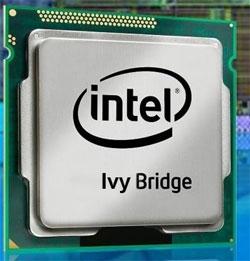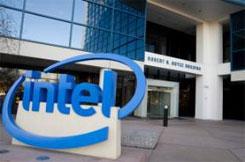Intel Eyes Technology to Keep Seniors in Their Homes
I don't know about you, but I get a little older every day, and sometimes I wonder what my life will be like when I'm a "senior." Given the advances in technology during my lifetime, it seems safe to assume that high-tech solutions for all sorts of aging afflictions will be commonplace by the time I need them. I certainly hope so! Twenty years from now there will be a population bubble of 76 million people between the ages of 65 and 85, up from 39 million today. If you're not in it, then your parents likely will be. These are the Baby Boomers and, as they head into their golden years, they're going to be ready to drop big bucks on solutions that make their lives more comfortable. The question is where those solutions will come from. Chances are that at least some of them will come from Intel. The chip will help fund a $200 million study of how technology can be used to provide in-home care for senior citizens. Up to 10,000 people may ultimately be studied over the course of ten years. Some questions: How do seniors go about their day? How and when do they take medicine? How fast do they get around the house? What are the risks and dangers of independent living that are most likely to force them into assisted living before they absolutely have to go? I've been to a couple of Intel technology showcases over the past few years, and it doesn't take too much imagination to figure out how technology may help seniors live independently longer. Think about smart Web-connected pill bottles, motion sensors connected central monitoring stations, vital-sign monitors that work wirelessly, and maybe even robots. The goal here—and I can't imagine anything more admirable—is to find ways to keep seniors in their homes and living on their own for as long as possible. Not only would that make lives better, and imagine the ultimate savings if, say, 20 million people could delay their entry into assisted living for five or more years. As Paul Crawford, director of health product research for Intel Labs, says, “Intel is trying to bring independent living into the digital age. It’s in the analog age now.” This is true. In a perfect world, the government would be leading research into so-called "telehealth" solutions as another way to bring down the health care costs. But if the government won't or can't do it, the private sector will, because it can see that demand for these products and services is going to surge big time. Think of it: Some day there may be an "Alzheimer's app," software that can assist someone whose mind and memory is failing by prompting them to remember previous conversations that have been recorded around the house. We already have the raw processing power to make such apps possible. What's needed now is the software, the fail-safe WiFi connectivity (no broken connections and no rebooting), and the market to bring such innovation to fruition. We'll get there, and I expect that insurance companies and the government will eventually get on board with subsidies. They'll see that a little technology up front is going to save lots of money down the road. Source: BusinessWeek


